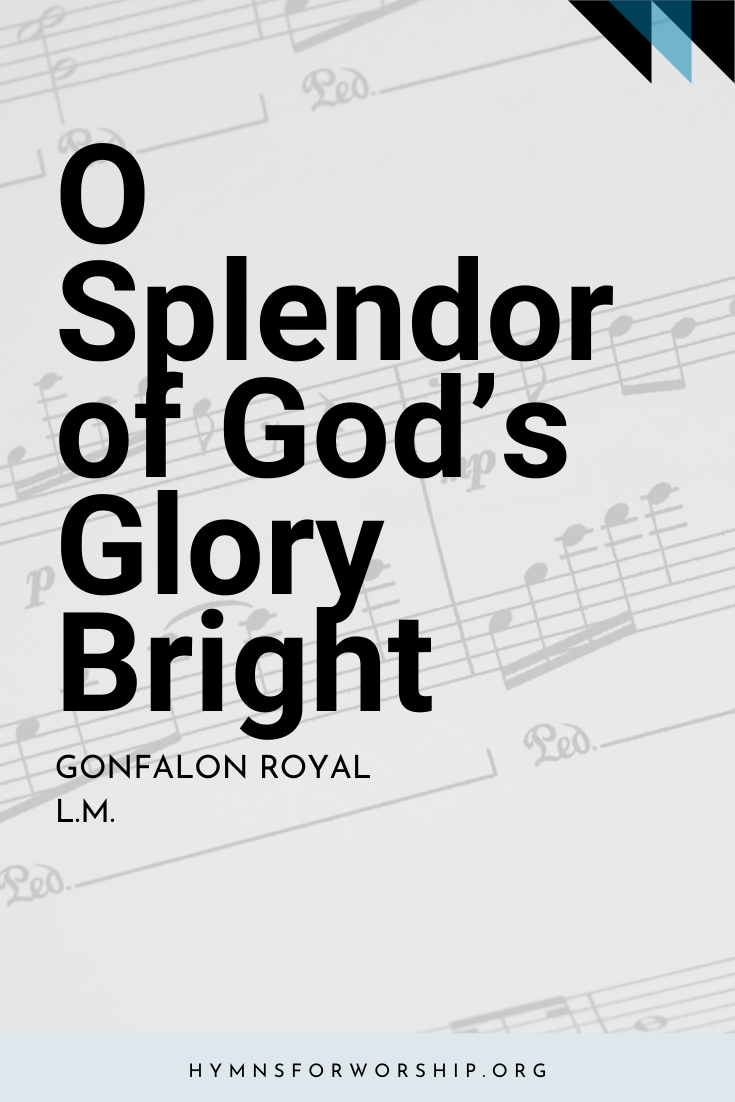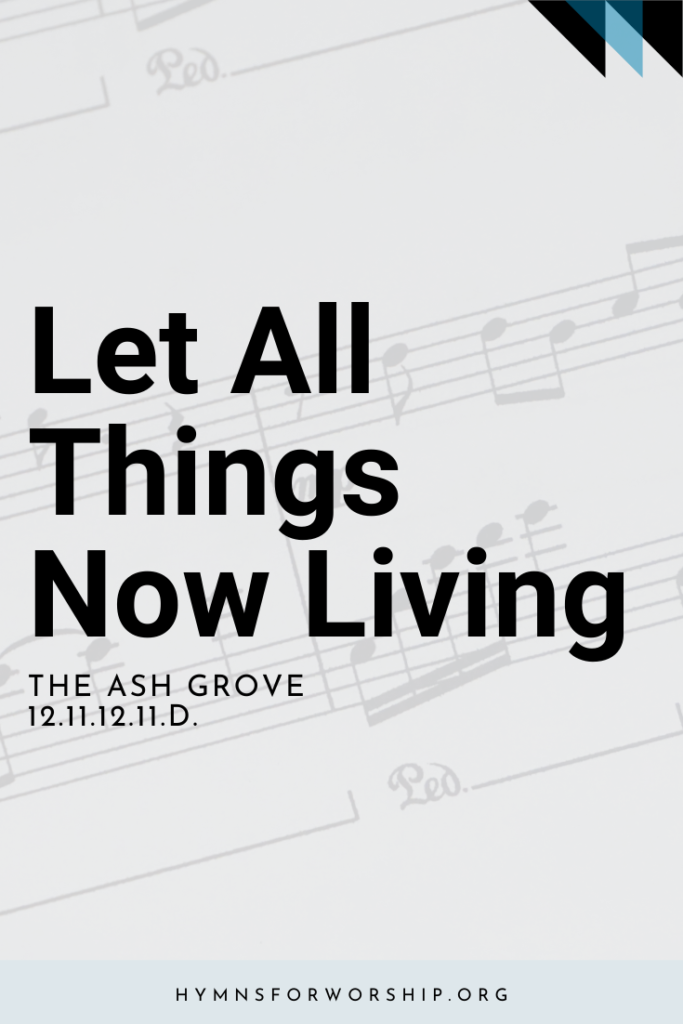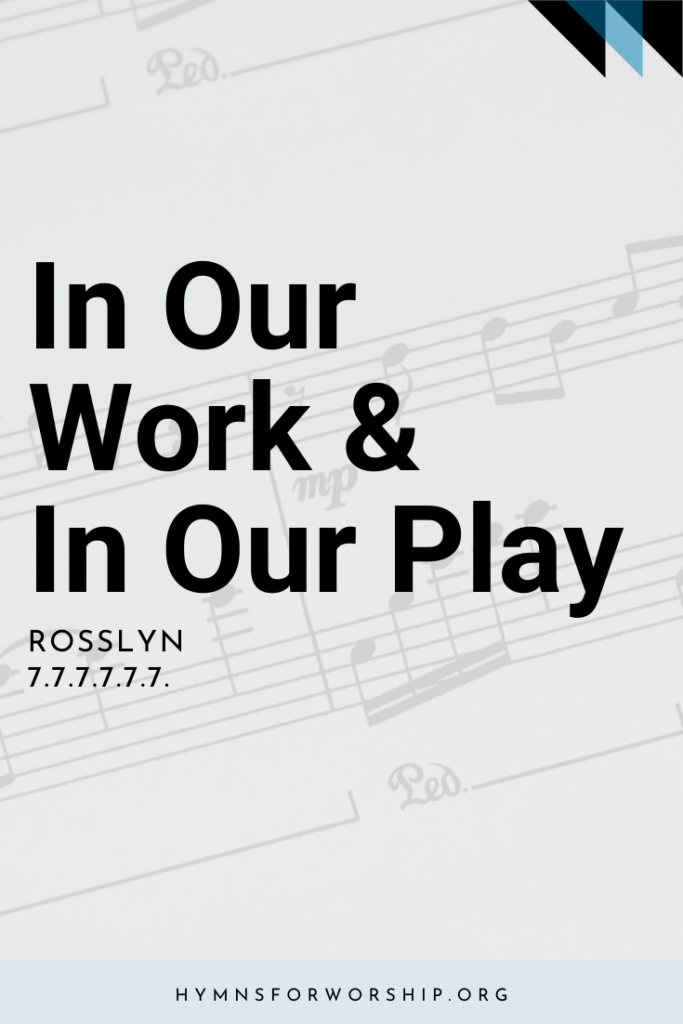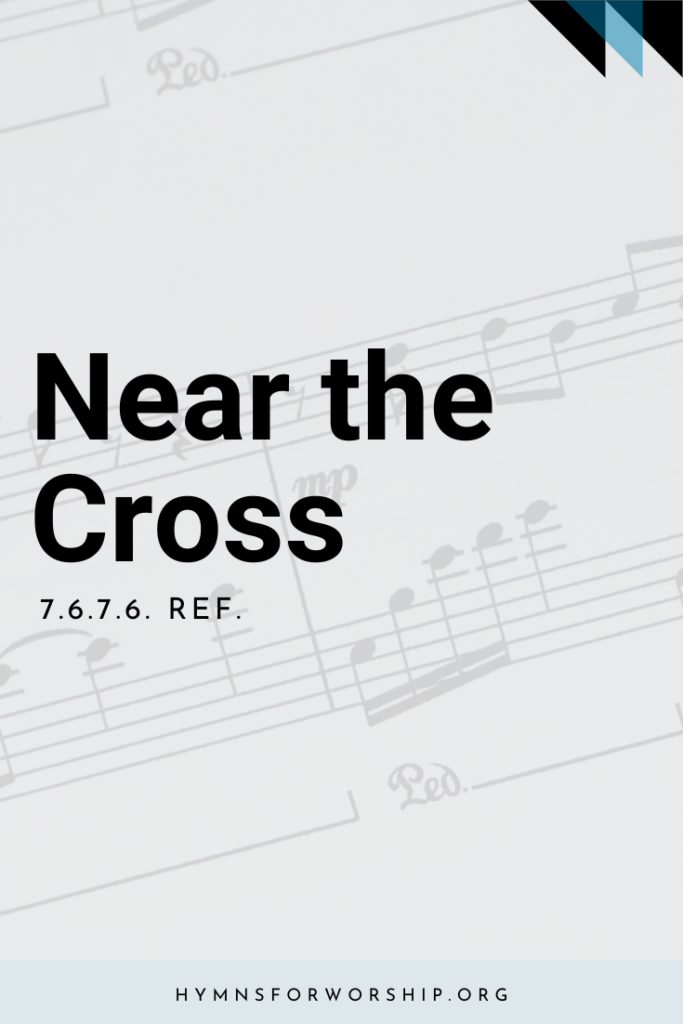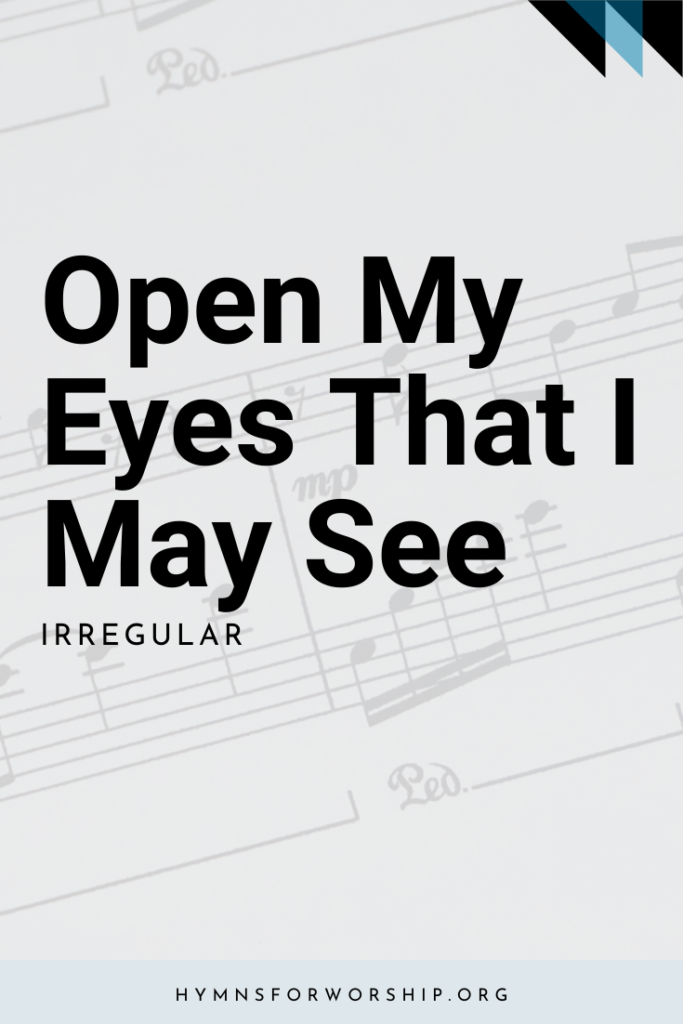Based on Hebrews 1:3, “Who being the brightness of his glory, and the express of his person, and upholding all things by the word of his power, when had by himself purged our sins, sat down on the right hand of the Majesty on high,” this beautiful morning hymn to Christ, the light of the world, is a prayer for help and guidance through the day. The use of the hymn for lauds (early morning prayers) is found c. A.D. 555 in the rule Aurelian of Arles. The earliest manuscript of this eight-stanza Latin hymn, “Splendor Paternae gloriae” (Splendor of Paternal Glory), dates to about A.D. 700. Scholars attribute this work to Ambrose, bishop of Milan.
Literally hundreds of poets have been impressed to translate this poem about Christ, the Light. The translation of the first two stanzas in the SDAH, by Robert Bridges (1844-1930; see SDAH 5), was made for his 1899 Yattendon Hymnal, published in England. The third and fourth stanzas are translations of stanzas 7 and 8, but not by Bridges.
Ambrose was born about A.D. 340 at Treves (modern Trier), Germany, amid wealth and power. He was educated at Rome and began practice of law in Milan, Italy. His ability as a speaker led to his appointment as prefect (president) of upper Italy and Milan. In this position he was called upon to preside over the election of a new bishop when Auxentius, an Arian, died in 374. (The Arian controversy over the nature of Christ, denying His oneness with God, was causing riots and bloodshed.) Ambrose’s gravity and calm serenity, as well as his eloquence, seemed to quiet the raging spirits. Tradition says that a child in the crowd cried out, “Ambrose is bishop!” The crowd caught it up and proclaimed him bishop on the spot. He was consecrated eight days later, even though at the time he was only studying for baptism!
He gave up his considerable private wealth, gave himself to prayer and study, and lived a model life. He accepted no invitations to banquets; he ate dinner only on Saturday, Sunday, and feast days; he preached every Sunday and often in the week; he made himself accessible to the poor; and he showed the constant zeal of a student, together with the wise prudence of a man of importance. (Read the story of his strong stand against idolatry, heresy, and despotism in Duffield’s Latin Hymns, 1889.)
Ambrose realized the power of congregational singing and is credited for bringing in the singing of psalms and hymns after the style of the Eastern churches. His hymns were simple and clear, setting a style known as “Ambrosian,” which was imitated for many centuries. One of his disciples was Saint Augustine, who was deeply moved by the beauty of the singing at Milan and said, “How I wept at thy hymns and canticles, pierced to the quick by the voices of thy melodious church! Those voices flowed into my ears, and the truth distilled into my heart, and thence there streamed forth a devout emotion, and my tears ran down, and happy was I therein” (Confessions 9. 6). Ambrose died April 4, 397.
The tune GONFALON ROYAL was composed for the text “The royal banners forward go.” Gonfalon is an old Anglo-Norman word that means “banner.” Percy Buck wrote the tune for the boys’ school at Harrow, and its first printing was in Public School Hymn Book, 1919, with “Lord of All Being” (see SDAH 17). Its popularity with children is seen in this story: “When in August 1947 a party of Welsh children were asked in a Children’s Hour broadcast to sing ‘any children’s hymn’ impromptu, it was this tune that they instantly selected” (Erik Routley, Companion to Congregational Praise, 1953).
Sir Percy Carter Buck was born March 25, 1871, at West Ham, Essex, England. He was educated at the Royal College of Music under Sir Hubert Parry (see SDAH 20), and at Worcester College, Oxford, where he earned an M.A. in 1894 and a D. Mus. In 1897. He was organist at Wells and Bristol cathedrals and, beginning in 1901, taught music at Harrow School for 26 years. He also taught at Dublin University and London University. When he retired in 1936, he was knighted. His publications include Acoustics for Musicians, 1918; The Scope of Music, 1924; A History of Music, 1929; Psychology and Music, 1944, and collaboration on Tudor Church Music Series; Oxford History of Music; English Psalter, 1925; and The Oxford Song Book, 1929. He wrote chamber and organ music, anthems and hymn tunes. Death came at Hindhead in Surrey on October 3, 1947.






